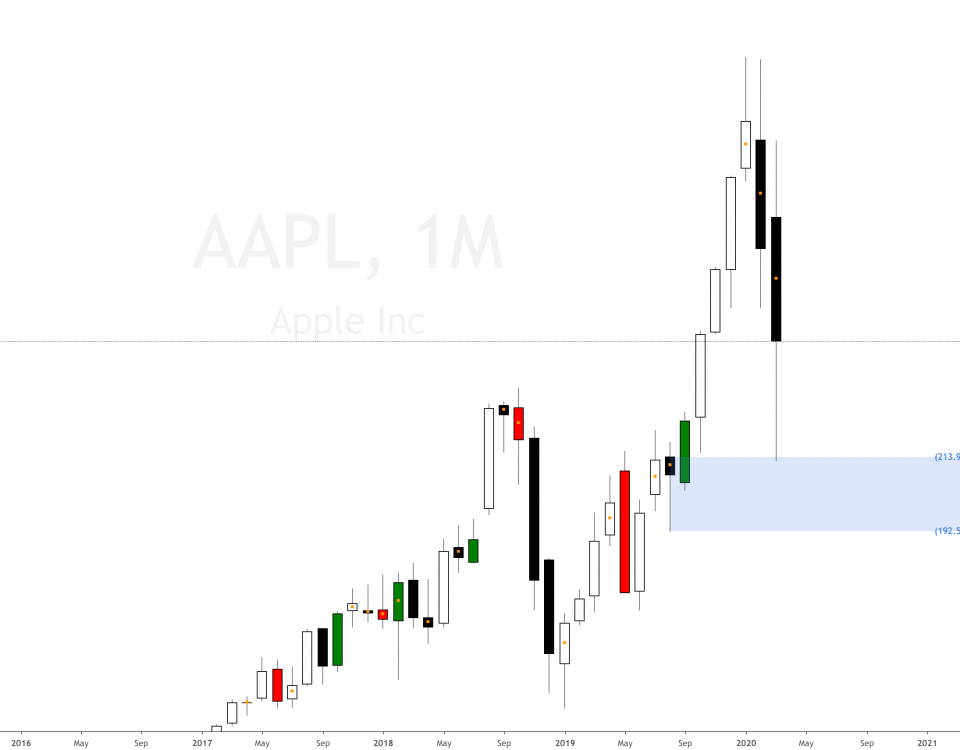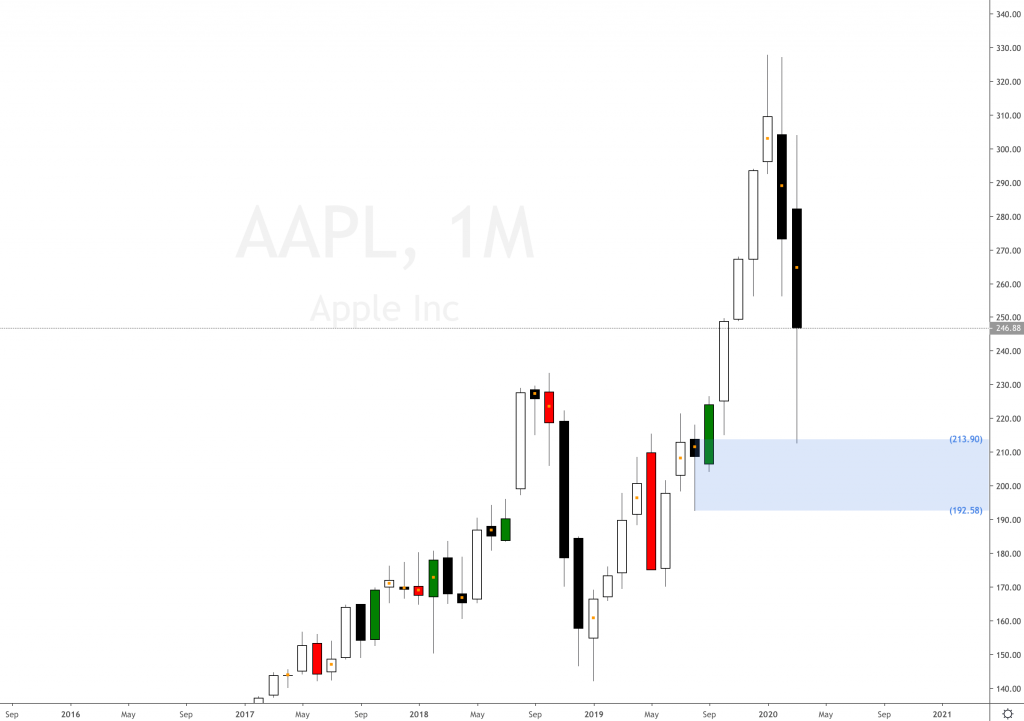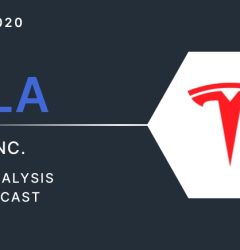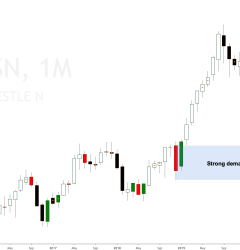26 Mar

Apple Inc. designs and manufactures smartphones, personal computers, tablets, wearables, and accessories worldwide. It also sells various related services. The company offers iPhone, a line of smartphones; Mac, a line of personal computers; iPad, a line of multi-purpose tablets.
Apple AAPL stock price prediction
Last 14th January 2020, I published an updated Apple Inc (AAPL) supply and demand analysis forecast where we put our supply and demand glasses on and analysed Apple Inc (AAPL) stock in the monthly timeframe. I received several emails from other traders telling me that I was crazy to say that Apple Inc (AAPL) was going to drop that low to $213 per share when it was trading around $300 per share.
Well, I would have loved to be wrong because many traders had a strong long bias on Apple Inc (AAPL), and they must have lost quite a lot of money in the strong sell-off that has happened in the last two months since Apple reached the $330 price level last January 2020.
I did a long-term supply and demand analysis for Apple Inc. (AAPL) a couple of months ago and published it on YouTube last 14th January 2020. Watch it before reading this updated Apple Inc forecast and technical analysis.
Apple stock supply and demand video analysis
AAPL chart forecast

Has the coronavirus helped the sell-off in Apple’s stock? Probably, but it was not the reason why it dropped. We expected the price to drop to a monthly imbalance of around $213 per share way before the coronavirus outbreak. The effects of the virus will have helped in the speed of the arrival, but it is not why the price sold off so strongly in Apple stock.
As supply and demand traders, we do not need to pay attention to news analysis or fundamentals. You can see by yourself what happened with Apple, Tesla and many other supply and demand analyses I’ve been posting in the blog and in my YouTube channel.
Apple price action analysis
This is the kind of price action technical analysis you will learn in our trading community. You will learn how to locate new supply and demand imbalances and trade without using any indicators, no news, no fundamental analysis, no earnings announcements, no volume or VSA analysis. Just supply and demand imbalances.
Trading supply and demand imbalances are ideal for beginners and those with full or half-time jobs. You won’t need to stay in front of the computer all day long trying to move price action with your mind.
As supply and demand traders, we do not need to pay attention to the news, fundamentals or any earnings reports. Once a big timeframe imbalance has gained control, earnings do just the opposite and react strongly to those imbalances. Why do you see positive earnings and then the underlying stock drops like a rock, or a negative earnings announcement and the stock rallies like a rocket out of control? You are probably missing the fact that there are big imbalances in gaining control.
You should not worry about fundamentals or earnings announcements unless you are doing very short-term trading and scalping.
You can use these imbalances to plan your trades in lower timeframes. Trading is just waiting for the right trigger points and scenarios to present themselves, this game has got a name, and it’s called the waiting game. We need to patiently wait for the correct scenarios and setups to happen and wait for the price to pull back or dip into the price levels we want to trade, in our case these price levels are made of supply and demand imbalances.
Join our supply and demand trading course if you want to learn how to trade using our supply and demand trading strategy.
There are several ways of buying stocks and futures. When trading stocks, you can buy shares of the underlying stock or use options strategies to go long or short at these specific supply and demand levels, long calls or long puts or spreads. You can even buy a CFD (contracts for difference) if you are in a country where it’s allowed.








